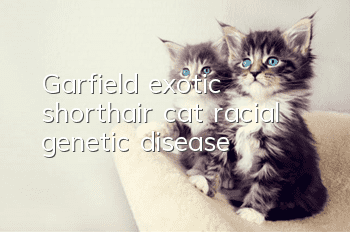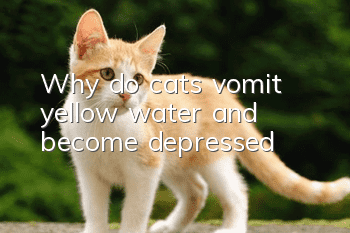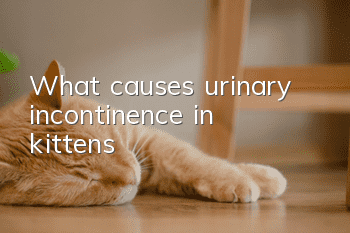Garfield (exotic shorthair cat) racial genetic disease

Exotic short-haired cats are an important branch of Persian cats. They inherit the cute appearance and gentle character of Persian cats. At the same time, they also inherit various genetic diseases caused by excessive purification of Persian cats. In order to be able to buy healthy cats. It is important to understand, ask the buyer, and make sure the buyer also understands these genetic diseases.
Deadly dyspnea
Flat face and nose. This facial feature makes Persian cats prone to various problems such as difficulty breathing, skin and eye diseases, and difficult births. Pets with flat faces have anatomical abnormalities that can cause shortness of breath and abnormal sounds. Malformed tear ducts can also cause blocked tear ducts, a condition in which tears continuously flow onto the face. This symptom is common in Persian cats and generally has no other problems. But it's also possible that it's a side effect of a more serious condition. For example, if the eyelids turn inward, causing eyelashes to repeatedly brush against the cornea, it can cause tearing, pain, infection, and corneal damage. Similar upper eyelid or canthus cyclochiasis can also cause wear on the cornea and cause tearing. Dystocia is also very common in Persian cats. A survey of 1973 Persian cats pointed out that the dystocia rate of Persian cats (22.1%) was higher than that of ordinary cats (16.1%), and the mortality rate was as high as 29.2%. A 2010 veterinary report stated that dystocia was caused by flat facial features.
Cat breeders have also come under pressure from veterinarians and animal protection/welfare groups due to the BBC program's coverage of purebred dogs. Since Persian cats are the breed most plagued by health problems, animal welfare groups have proposed changes to Persian cats. Breeding standards to prevent over-characterization of Persian cats’ flat-faced features and prohibit the breeding of cats above a certain standard. GCCF limits the height of the cat's nose (no higher than the corner of the eye), and TICA and FIFE limit the cat's nostrils to be open. FIFE further states that a qualified Persian cat’s nose must contain “free and convenient air passage.” The German Animal Welfare Act also prohibits the breeding of flat-faced cats whose nose tip is higher than the lower eyelids.
Polycystic kidney disease
(PKD can cause renal failure in adult cats) The incidence rate in Persians reaches 36-49%. Crystals continue to form and cover the kidneys, gradually replacing normal kidney tissue and causing kidney enlargement. On average, cats around 7 years old (3-10 years old) will develop symptoms of kidney failure, including excessive drinking and urination, as well as decreased appetite, weight loss, and depression. The disease is autosomal dominant, and ultrasound or DNA testing can eliminate affected individuals from the breeding population to reduce or even eliminate the disease in some bloodlines. trust note: So it is very important to ask and check whether both parents have PKD in their family tree and are HCM negative.
Ventricular hypertrophy
Ventricular hypertrophy is aHeart disease is common in cats. It is inherited in Maine Coon, American shorthair cats (trust note: exotic shorthair cats have Persian and American shorthair ancestry), and possibly Persian cats. The disease causes left ventricular hypertrophy and ultimately sudden death. It usually occurs in men or elderly individuals. The incidence rate in Persian cats is 6.5%. Unlike PKD, which can be detected at an early stage, cardiac testing must be performed continuously to remove affected individuals from the breeding population.
Based on the prevalence of genetic diseases in purebred cats due to over-purification (inbreeding), this is an important reason why we recommend that all non-breeding pets be neutered. Because non-breeding pets generally do not undergo examinations for various genetic diseases, if they produce offspring, they may once again contaminate the genetically disease-free breeding group that was finally established.
Other possible genetic diseases:
Progressive retinal atrophy, a recessive genetic disease. Some people believe that only chocolate and Himalayan threads are affected, but there is no evidence that this disease is related to coat color.
Basal cell carcinoma is a common skin cancer of the head, back, and chest. Often benign, malignant is more common in Persian cats.
Blue Smoky Persians often have multiple systems and recessive genetic diseases. White cats include pure white Persian cats (blue eyes), which are often deaf.
Persians are also more sensitive to insecticides.
Hip dysplasia.
Occlusion misalignment (teeth misalignment) trust note: Most cat associations require that there is no problem with the bite. Even without malocclusion, Persians have obvious eating difficulties because of their flat, fat faces. . . So Persian cats even have special bowls.
- How to prevent nasal congestion in cats
- Do Himalayan cats shed a lot?
- Can cats eat potassium iodide?
- How long does it take to keep a domestic cat to rule out rabies?
- Can cats eat grapefruit pulp?
- Symptoms of cat ear mites
- How long do cats generally live?
- Why do cats urinate everywhere? Tell you how to solve the problem of cat peeing
- How qualified is the cat triple antibody test?
- What should I do if a male leopard cat doesn’t want to mate with a female cat?



